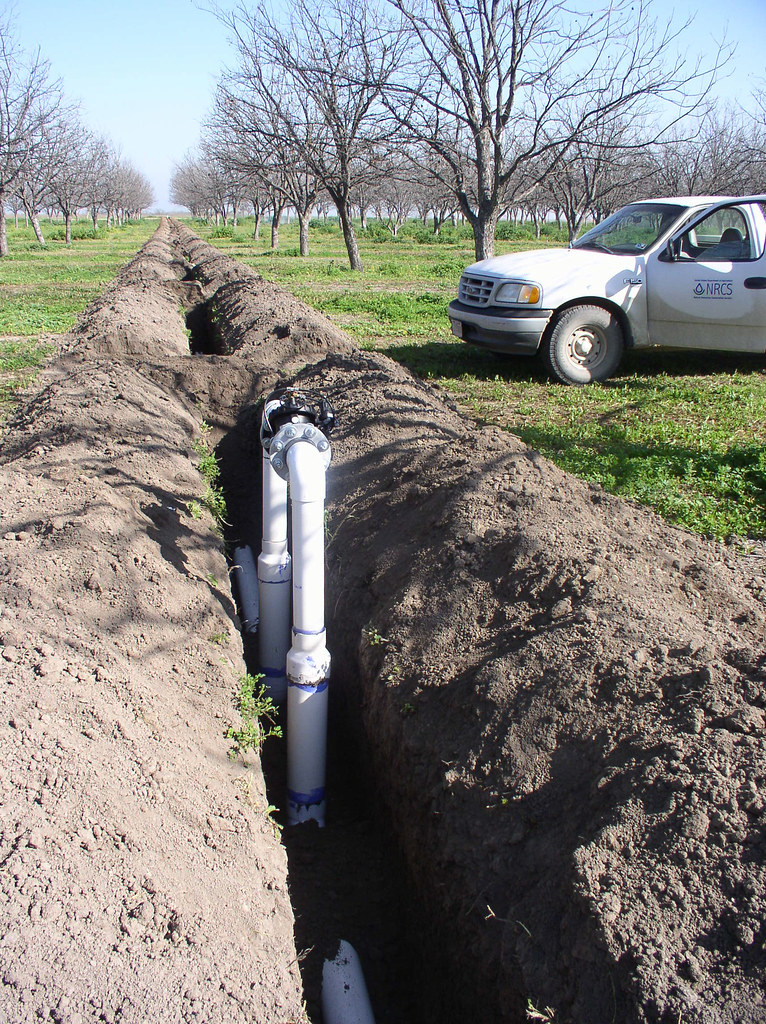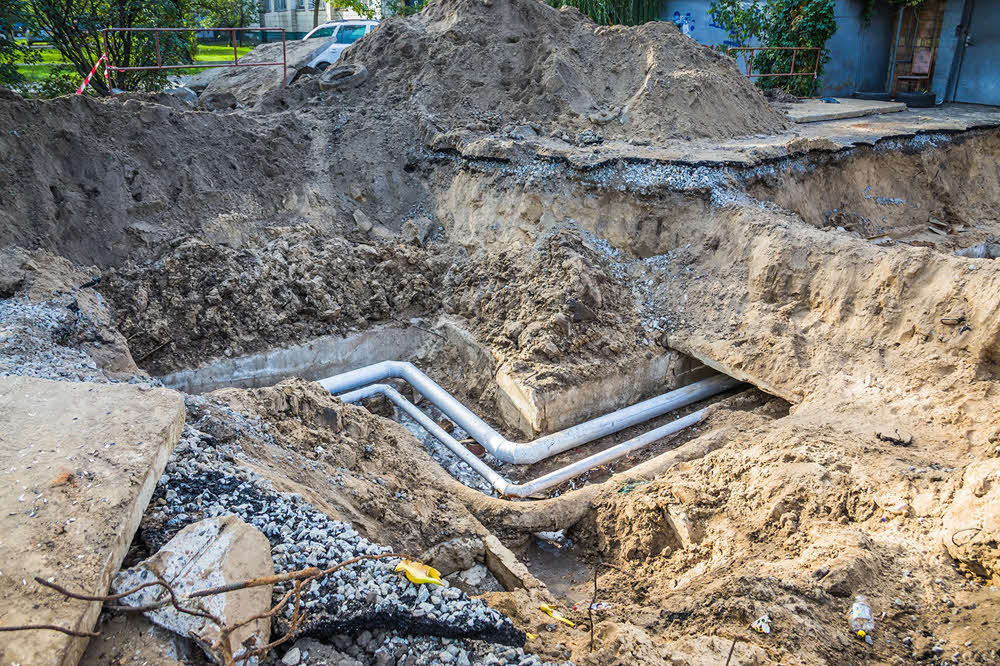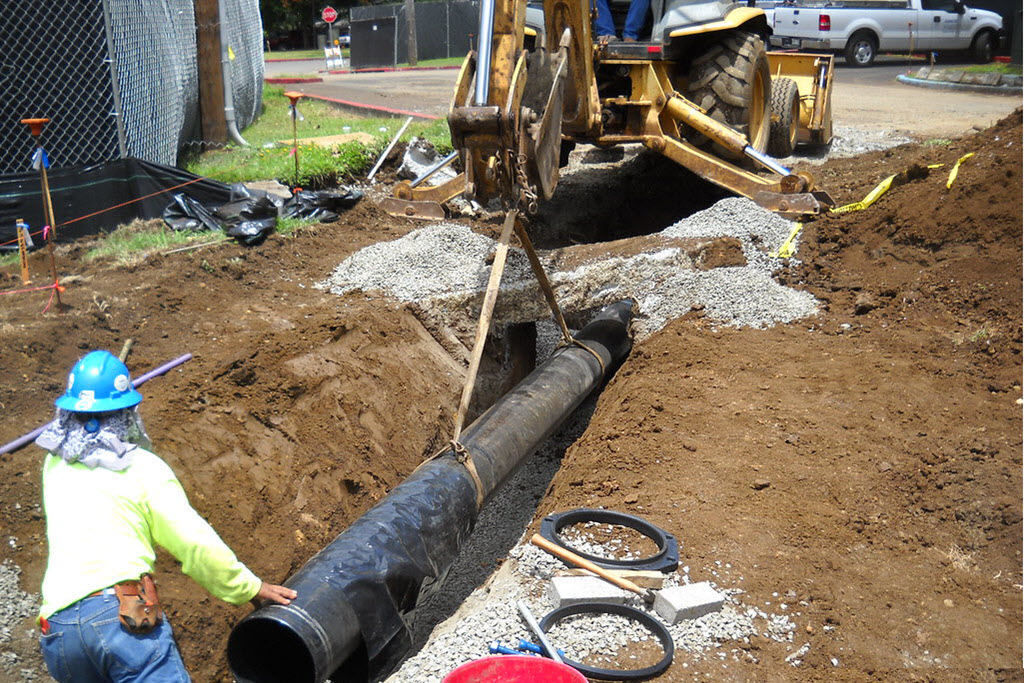Trenching Water Line Servicesin Grosse Pointe Farms MI
Trenching for Water Lines to Ensure Reliable Water Flow
We Are Locally Owned & Operated For Over 37 Years
Contact Us Today!
We Serve Businesses In And Around The Following Cities:
About Trenching Water Line Services
Grosse Pointe Farms; the Essence of Commercial Water Line Trenching
In the vibrant city of Grosse Pointe Farms, home to thriving commercial properties, underground water line systems form the backbone of a high-quality infrastructure that supports daily operations. The provision and proper management of utilities like water have a direct impact on the business climate and the overall reputation of properties. Fundamentally, incorporating a trench for a water line is one of the most crucial stages when installing a water service line, which requires considerable expertise and careful planning. Operating at the intersection of practical requirements and city regulations, this guide aims to help you understand the process, real-world applications, and benefits of trenching for water lines in commercial properties.
The Essential Process of Trench for Water Line
At the heart of running a new water line is the process of trenching. This refers to digging elongated narrow depressions in the ground which serve as a protective and accommodating avenue for water lines. In Grosse Point Farms, a water main installation necessitates a careful study of soil conditions, city codes, and the presence of other utility lines. Planning the trench is an elemental step, involving depth and width calculations and assessing the most effective route with minimum disruption to the property. Trained professionals usually carry out this process with precision tools and machinery to avoid damage to existing structures.
Once the route is determined, the trench is systematically dug and then lined with a layer of sand to protect the water lines from rocks and sharp debris. The water line pipes are then carefully laid, ensuring each section connects accurately for uninterrupted service. Post-installation checks then confirm the absence of any leaks or malfunctions before the trench is backfilled and the surface restored.
Unveiling the Benefits
The benefits of installing a trench for water line are multiple and multifaceted. Firstly, the trench provides a necessary protective sheath, mitigating the risk of accidental damage during the operational activities of the commercial premise. With the correct depth, the water service line remains safe from invasive roots, frost, or load-bearing pressure from above-ground infrastructures. It simplifies maintenance issues in some cases, as the location of the water line is known, reducing the time and cost spent locating and fixing a problem. This adds to the long-term durability of the water line system, fostering efficiency, and sustainability.
Opting for professionals like D&J Contracting for performing the trench for a water line work ensures your business benefits from their astute understanding of local weather and soil conditions, robust safety measures, and expertise with city codes in Grosse Pointe Farms.
Real-world Applications of Trench for Water Line
The implementation of water line trenching is found across all types of commercial properties. Restaurants, shops, offices, schools – any location that requires a water main installation finds the trenching process crucial. Large complexes with sprawling areas such as shopping malls and educational institutions particularly benefit from well-planned and well-executed trench for water line projects. It forms the core part of their essential infrastructure, contributing to their performance and reputation.
A real-world example of D&J Contracting’s expertise was the successful completion of a multi-layered water line system for a large office complex in Grosse Pointe Farms. Our professional team meticulously planned and executed the trenching, ensuring seamless installation and minimum disruption to the everyday business, thus exemplifying our commitment to quality and efficiency.
Shaping the Future of Commercial Properties: Towards Conclusion
As we reflect, installing a water service line in the tapestry of Grosse Pointe Farms involves much more than meets the eye. Foremost is the indispensable task of creating a trench for the water line, a process that anchors the entire system, safeguarding it against numerous environmental and behavioral hazards, while optimizing its utility with efficient execution. In the making of this cog that turns the wheel in commercial properties, professional services like D&J Contracting play the role of catalysts, bringing their proficiency, local knowledge, and a commitment to providing the best for their clients.
Whilst this guide sheds light on the critical process of trenching for water lines, it is only through active engagement with an expert team can you maximize the benefits and minimize the risks. Thus, choose wisely and give your commercial property in Grosse Pointe Farms the strong foundation of a robust water line system it thoroughly deserves.
Trenching Water Line Services Gallery


Call Us Today to receive your Free Quote for
Trench For Water Line in Grosse Pointe Farms
Serving: Grosse Pointe Farms, Michigan

About Grosse Pointe Farms, Michigan
The area that would become Grosse Pointe Farms was originally incorporated as the Village of Grosse Pointe in 1879. By 1889, the village extended from land just above Provencal Road in the northeast to Cadieux Road in the west. In 1893, the portion of the village east of Fisher Road broke off and incorporated as the Village of Grosse Pointe Farms after a dispute over the location of a tavern. It was not until 1949, however, that the village incorporated as a city.
The U.S. Postal Service operates the Grosse Pointe Post office in Grosse Pointe Farms.
According to the United States Census Bureau, the city has a total area of 12.32 square miles (31.91 km), of which 2.75 square miles (7.12 km) is land and 9.57 square miles (24.79 km) is water. The water is part of Lake St. Clair.
The Farms has a more varied topography and streetscape than the other southern Grosse Pointes. While Grosse Pointe and Grosse Pointe Park are built on a standard street grid and are basically flat, Grosse Pointe Farms is partially built on the same grid flowing out of Detroit, but also features districts with irregular, curving street paths. A low but noticeable ridge runs through the center of the city. The Farms also contains the “point” in Grosse Pointe, where, just east of the Grosse Pointe War Memorial, there is a large bend in the lakeshore, such that those on the shoreline face east, instead of south, as they do when on the shoreline of neighboring Grosse Pointe, closer to the entrance of the Detroit River.
The cityscape varies widely, with large sections of old homes ranging from bungalows to mansions, and a few newer sections with ranch houses or luxury homes built on subdivided estates. The Farms has a downtown on Kercheval Avenue combining historic buildings with newer, neo-traditional storefronts.
| Census | Pop. | Note | %± |
|---|---|---|---|
| 1900 | 817 | — | |
| 1910 | 862 | 5.5% | |
| 1920 | 1,649 | 91.3% | |
| 1930 | 3,533 | 114.3% | |
| 1940 | 7,217 | 104.3% | |
| 1950 | 9,410 | 30.4% | |
| 1960 | 12,172 | 29.4% | |
| 1970 | 11,701 | −3.9% | |
| 1980 | 10,551 | −9.8% | |
| 1990 | 10,092 | −4.4% | |
| 2000 | 9,764 | −3.3% | |
| 2010 | 9,479 | −2.9% | |
| 2020 | 10,148 | 7.1% | |
| U.S. Decennial Census | |||
As of the census of 2010, there were 9,479 people, 3,718 households, and 2,770 families residing in the city. The population density was 3,446.9 inhabitants per square mile (1,330.9/km). There were 3,952 housing units at an average density of 1,437.1 per square mile (554.9/km). The racial makeup of the city was 95.4% White, 1.8% African American, 0.2% Native American, 1.3% Asian, 0.4% from other races, and 1.0% from two or more races. Hispanic or Latino of any race were 2.0% of the population.
There were 3,718 households, of which 33.7% had children under the age of 18 living with them, 66.0% were married couples living together, 6.2% had a female householder with no husband present, 2.3% had a male householder with no wife present, and 25.5% were non-families. 23.0% of all households were made up of individuals, and 12.3% had someone living alone who was 65 years of age or older. The average household size was 2.55 and the average family size was 3.02.
The median age in the city was 45.1 years. 25.8% of residents were under the age of 18; 4.8% were between the ages of 18 and 24; 19.5% were from 25 to 44; 32.6% were from 45 to 64; and 17.5% were 65 years of age or older. The gender makeup of the city was 48.8% male and 51.2% female.
At the 2000 census, there were 9,764 people, 3,804 households, and 2,868 families residing in the city. The population density was 3,618.8 inhabitants per square mile (1,397.2/km). There were 3,937 housing units at an average density of 1,459.2 per square mile (563.4/km). The racial makeup of the city was 97.58% White, 0.65% African American, 0.11% Native American, 1.13% Asian, 0.11% from other races, and 0.42% from two or more races. Hispanic or Latino of any race were 1.11% of the population.
There were 3,804 households, of which 34.3% had children under the age of 18 living with them, 67.8% were married couples living together, 6.1% had a female householder with no husband present, and 24.6% were non-families. 22.3% of all households were made up of individuals, and 12.0% had someone living alone who was 65 years of age or older. The average household size was 2.57 and the average family size was 3.03.
Age distribution was 26.5% under the age of 18, 3.6% from 18 to 24, 23.4% from 25 to 44, 28.6% from 45 to 64, and 17.9% who were 65 years of age or older. The median age was 43 years. For every 100 females, there were 90.6 males. For every 100 females age 18 and over, there were 87.5 males.
The median household income was $100,153, and the median family income was $109,264. Males had a median income of $87,108 versus $53,241 for females. The per capita income for the city was $54,846. About 1.5% of families and 2.1% of the population were below the poverty line, including 3.1% of those under age 18 and 1.4% of those age 65 or over.
The community is served by Grosse Pointe Public Schools (GPPSS). Public schools within Grosse Pointe Farms include Père Gabriel Richard Elementary School, Kerby Elementary School, Brownell Middle School, and Grosse Pointe South High School. Along with Richard and Kerby, Monteith Elementary School in Grosse Pointe Woods serves a section of the city. All residents are zoned to Brownell. Almost all residents are zoned to GPS High, while those in a northwest section are zoned to Grosse Pointe North High School in Grosse Pointe Woods.
Saint Paul Catholic School is in Grosse Pointe Farms.
The Grosse Pointe Public Library operates the Central Branch in Grosse Pointe Farms.
Call Us Today to receive your Free Quote for
Trench For Water Line in Grosse Pointe Farms
Related Services in Grosse Pointe Farms, Michigan
We Serve Businesses In The Following Zip Codes:
48007, 48015, 48021, 48026, 48035, 48036, 48038, 48042, 48043, 48044, 48045, 48046, 48047, 48048, 48050, 48051, 48066, 48071, 48080, 48081, 48082, 48083, 48084, 48085, 48088, 48089, 48090, 48091, 48092, 48093, 48098, 48099, 48225, 48230, 48236, 48310, 48311, 48312, 48313, 48314, 48315, 48316, 48317, 48318, 48397